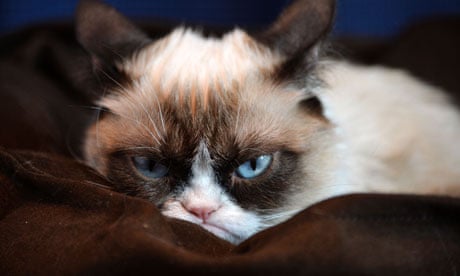I can't have been the only person, last week, to feel a rush of nostalgia upon learning that Thames Water had removed a bus-sized, 15-tonne lump of food fat ("mixed with wet wipes") from the sewers under London. The fatberg was an August news story redolent of the old-fashioned silly season. Admittedly, it wasn't an instance of the canonical form of such stories – Animal Discovered in Wrong Place – but it was close enough to serve as a reminder that the silly season, defined as a distinct period of summer newslessness and journalistic goofing-off, is all but dead.
No doubt this is partly because it has become absurd to imagine a newsroom full of journalists feeling sufficiently secure in their jobs to spend a whole month goofing off. But it's also because the silliness supply is now year-round. Among its other consequences, the web functions as a global machine for the locating and rebroadcasting of quirk, delivering a ceaseless stream of updates on adorable animals, idiotic criminals, offbeat scientific discoveries, pranks, pratfalls, kids acting cute, Fox News hosts acting terrible and breathtaking photos of the natural world. Recently, it has too often felt as though the dominant mode of online interaction might be hate-addled trolling or heartless bullying. Mainly, though, the social web is a planet-wide daily chorus of people saying: "Huh!"
In her recent book Our Aesthetic Categories: Zany, Cute, Interesting, the academic Sianne Ngai dives deep into this modern ocean of Huh. Huge swathes of late capitalist culture, she argues, fit into one of these three boxes. "Cute" is especially fascinating: does any other word do so much heavy lifting? It emerged originally from the shortening of "acute", thus "sharp" as in clever or witty: a cute riposte. But a Martian lexicographer, noticing how frequently it's deployed – to describe babies, clothing, sexually attractive people, newborn koalas and dogs in bowties – might be forgiven for suspecting some serious psychological hangups. (Another book could be written about chummy packaging-speak, as found, notoriously, on Innocent smoothies and Pret a Manger sandwiches. Is this cute? Cutesy? Zany? As well as soul-corroding, I mean.)
What defines the culture of cute, zany and interesting above all, Ngai shows, is emotional mildness and passivity: surely few cute-kitten videos, nor eyebrow-raising science tidbits, have ever inspired anyone to anger, political action or into a creative frenzy. What's more, it's all so fleeting: on Twitter, for example, it's perfectly possible to encounter "the cutest thing you'll see all day" several times each day, having completely forgotten the previous one. "So interesting!" someone will electronically exclaim, linking to a pretty infographic about poverty, or a slideshow of the world's scariest airport approaches, or a closeup video of crocodiles. They're not wrong: this stuff really is interesting. But wouldn't a world totally saturated by it be lacking something? Shouldn't the cultural dominance of the mildly interesting be a source of (mild) concern?
Not that I mourn the silly season: the national camaraderie and amusement we were supposed to feel about the stories involved always felt rather forced. With year-round quirk, the problem is reversed: it almost always feels preferable to click on the cute or zany than to find out the latest on Syria or zero-hours contracts. But I fear all this makes me sound like a curmudgeon bemoaning our loss of seriousness – as well as a hypocrite, since I'm as guilty of all this as anyone. So please do now feel free to redress the balance by inspecting a collection of the funniest underwater selfies or pictures of wildfires. Oh, and if you read one thing today, make it – oops, sorry. Too late.
How Netflix reveals the gap between what we claim to like – and what we really want
If you've ever subscribed to a DVD-by-mail film rental service, you'll have encountered the problem of overestimating your own tastes. When you're choosing movies for your queue online, it's easy enough to feel enthusiastic about Iranian art-house, gruelling documentaries on the drugs war or finally watching The Seventh Seal. But flopping down exhausted after work, you realise it's Hot Tub Time Machine or The Avengers that appeals, but that you haven't got.
Streaming services such as Netflix solve that problem – and the viewing data they collect exposes just how big a gap there is between the things we claim to like and the things we really want. "A lot of people tell us they often watch foreign movies or documentaries," Carlos Gomez-Uribe, Netflix's algorithm chief, tells Wired magazine. "But in practice, that doesn't happen very much." If you've ever wondered why Netflix recommends so many films with low star ratings, meanwhile, it's the same phenomenon at work: people give high ratings to critically acclaimed movies and lower ones to mass-market trash – but it's the trash they more frequently watch. "We know that many of the ratings are aspirational, rather than reflecting your daily activity," says another Netflix executive, diplomatically. One result of all this? The new social embarrassment of switching on Netflix in the company of visitors, only to find it suggesting the kinds of films – cheesy rom-coms, brainless explosion-heavy pablum – that I'd obviously never, ever, ever, ever watch.

